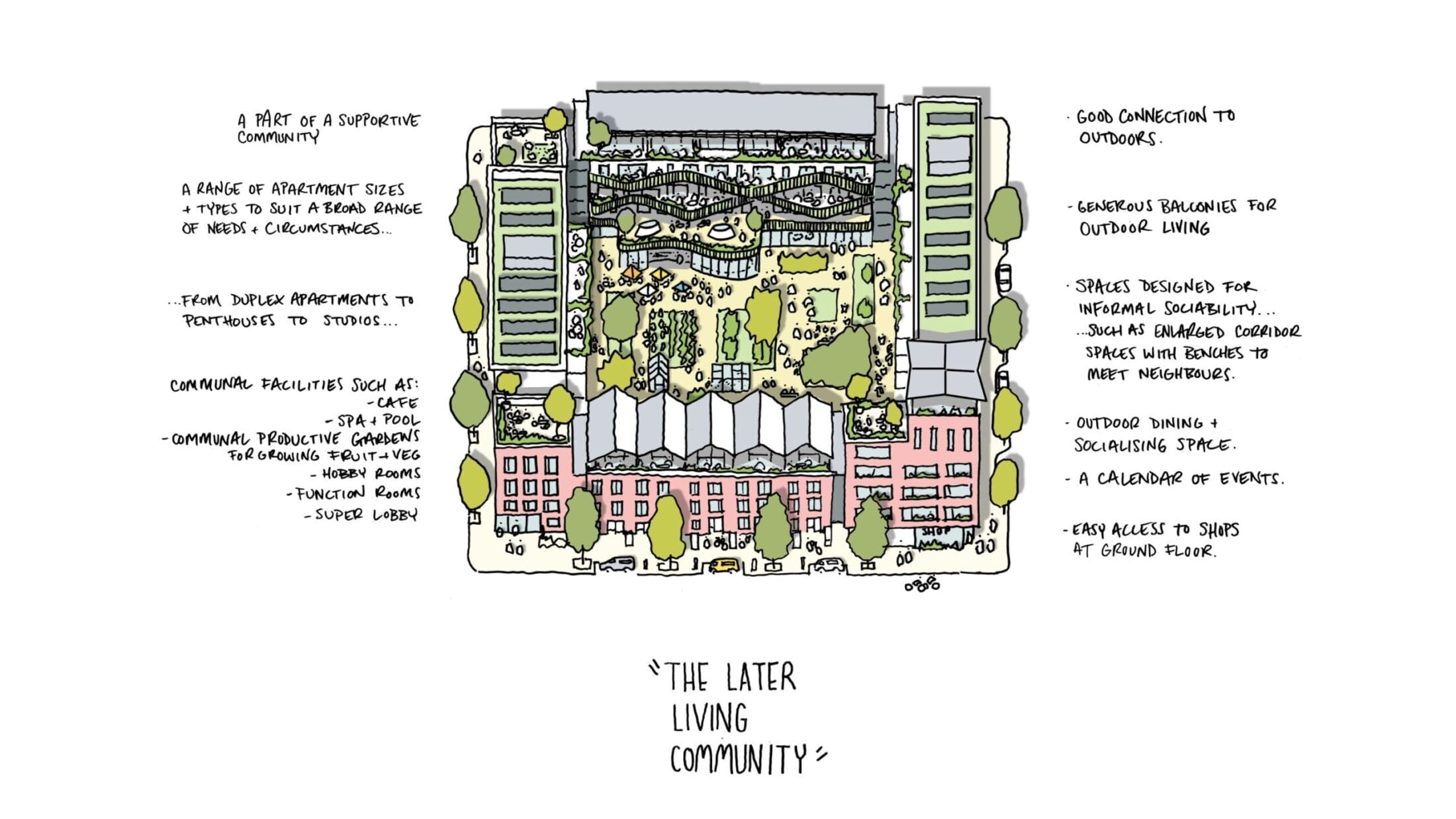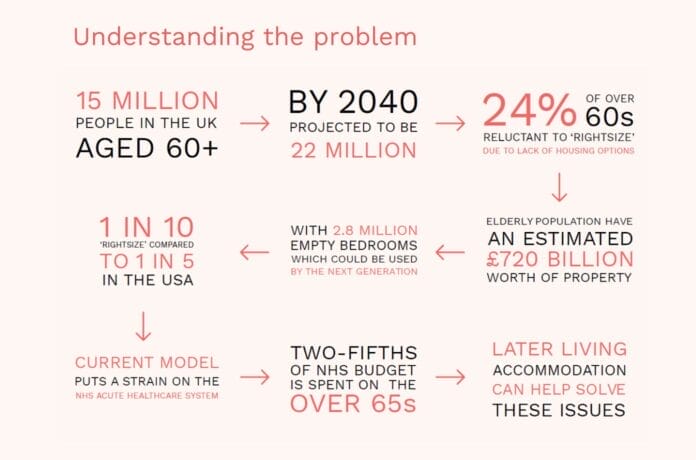
Later living in the UK is at a crossroads. While the concept of retirement communities and assisted living has made headway, only 0.8% of the population lives in such accommodation, compared to 5-6% in countries like the US, Australia, and New Zealand. The delayed adoption of later living options – with the average age of entry being 78 – not only poses significant health risks for older adults but also exacerbates societal challenges such as housing shortages and a misunderstanding of senior citizens’ value. A fresh approach is urgently needed to reshape the narrative around later living.

Necessity or Choice?
The reluctance to move into retirement accommodation is shaped by several misconceptions and barriers. For many, such a move represents the end of independence, equating it with declining health and reduced autonomy. The prospect of leaving a family home, potentially relocating away from a familiar community, and facing financial uncertainties discourages individuals from considering the change. Instead, modifying an existing home often feels like a simpler and safer solution.
However, delaying the transition to more suitable housing comes with significant health risks. Prolonged isolation and loneliness can harm mental and physical well-being, increasing vulnerability to depression, cognitive decline, and chronic health conditions. Older adults living alone also face higher risks of accidents and falls, often leading to reliance on healthcare systems at a later stage when the opportunity for preventative care has passed. These patterns place an immense burden on the NHS, exacerbating issues like bed-blocking and stretched resources.
Early Engagement with Later Living for Better Outcomes
Embracing later living accommodation earlier in life offers multiple advantages. Such a move fosters community and social connection, enabling older adults to interact with like-minded individuals and engage in meaningful activities. Social engagement not only enhances happiness but also significantly reduces risks of cognitive decline and loneliness.
Moreover, “rightsizing” – transitioning to smaller, more manageable homes – can ease financial burdens, free individuals from home maintenance, and allow them to plan their later years proactively. Current estimates suggest that those aged 55 and older control over £1 trillion in UK housing assets, much of which is tied up in family homes. Earlier transitions could unlock this housing stock, addressing broader societal housing shortages while improving affordability for younger generations.
A New Model for Later Living
A key step to transforming later living lies in reimagining its framework. Instead of reinforcing outdated perceptions of retirement living as a sign of decline, it should be seen as a lifestyle choice akin to improving work-life balance. Moving while still active and in good health can empower older adults to maintain independence for longer, with support systems that adapt as needs evolve.
Location plays a pivotal role in reshaping these perceptions. Vibrant retirement communities situated in or near town centres can foster integration and reduce isolation. Accessible amenities, healthcare services, and cultural opportunities within walkable distances help create an environment where older adults remain engaged in the broader community. Drawing parallels with student housing or the private rental sector, integrating later living into urban regeneration could breathe new life into town centres. Proximity to amenities reduces the need for purpose-built facilities, allowing operators to focus on creating adaptable, mobility-friendly, and safe living environments.
The Role of Healthcare Integration
The NHS currently dedicates 40% of its budget to individuals over 65, a figure that highlights the unsustainable burden of an ageing population. Flexible housing for later life, combined with integrated healthcare provision, can alleviate some of these pressures. Telehealth solutions embedded into housing design further reduce the need for onsite medical services, enabling greater independence while ensuring safety. By preventing late-stage health crises, such initiatives can extend the quality of life for older adults and ease demand on acute healthcare services.
Addressing later living holistically delivers benefits across society.
Benefits Across Society
Addressing later living holistically delivers benefits across society, impacting multiple stakeholders. For seniors, it fosters independence, sustains social connections, and enhances their quality of life within adaptable, purpose-built environments. In the housing market, the availability of family homes increases, alleviating housing shortages and supporting younger generations while promoting market stability. For investors, catering to the needs of younger retirees through desirable later living accommodations opens up an underserved market, creating new revenue streams while addressing broader societal challenges.
Championing a new vision for later living
The future of later living in the UK requires a shift in mindset. By encouraging earlier adoption of retirement accommodations, we can promote independence, reduce health risks, and alleviate strain on the NHS. Integrated, vibrant later living communities will not only transform perceptions of aging but also ensure a sustainable, inclusive future for all generations. Let us champion a new vision for later living that prioritizes proactive planning, community engagement, and the well-being of our aging population.



